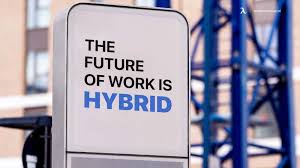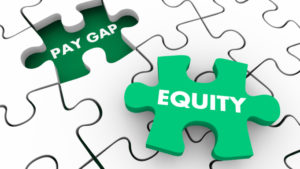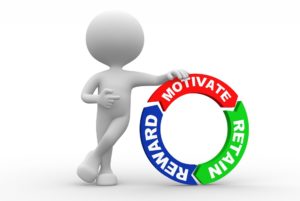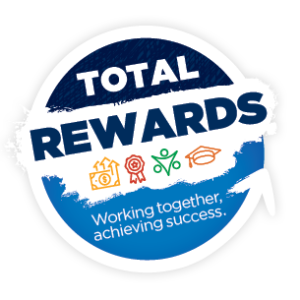
It is time for Leap Solutions’ annual “Staff Picks”: our wishes, recommendations, and commitments to you—our loyal clients, associates, and friends—for making 2022 a year of hope and inspiration!

Our Staff Picks in the 2021 Annual Year-End Newsletter will cover:
- Conscious Learning
- Maintaining Positivity, Balance, and Mental Health
- Igniting Joy at Work Even During Covid
- Personal Transformation 2022
- Leaves of Absences
- Is Remote Work for You?
- The Better Gift
- Ghosts in the System
Conscious Learning
Recently, I had the opportunity to join a client in their PDP (the behavioral profiling tool we use at Leap Solutions) professional certification. We have used this tool since 2009 for individual coaching and team strengthening. Joining the training served as a reminder that we continuously learn even if we think we are the subject matter experts in any particular field.
At a conscious level, I always believe that we should be continuous learning beings, but often our learning is unconscious, yet we continue our learning. The COVID pandemic had many learning opportunities thrust upon us, which I can look back and clearly understand the challenges that my team and I experienced while embracing those experiences for the learning and growth that came from them.
Our clients are quite fascinated with the PDP ProScan and the PDP TeamScan results especially when they say, “The profile survey only took about five minutes to complete. How did the tool so closely reveal my traits in the report?” This natural curiosity is explained yet a client still wonders about the “How”. One of our clients decided they wanted to learn more about the tool and asked me to join them for their PDP certification. In mid-November, we all headed to Scottsdale, AZ for the training. The client wants to use the PDP tools with the teams within their company. As I spoke with them prior to the certification and then participated in the training with them, I was fascinated to watch their learning transformation and their understanding of the “How” puzzle pieces. Figuratively, the black box was unveiled and their understanding, as well as responses, became clearer.
The key learning takeaway for me is a concept I consistently express to clients, “If you are conscious in your learning, you can be intentional”. I am excited to see this client use their newly found learning to help their team become stronger, but more importantly, I watched them become highly conscious and be intentional in their focus to move the company forward. For 2022, be conscious so you can be intentional!
Happy Holidays
Chuck McPherson, Partner

Maintaining Positivity, Balance, and Mental Health
As I reflect on 2021, self-care was a common thread in many conversations for me. As things have started to “open” up, we’ve come back to work and to gather again, I found myself struggling to maintain positivity, balance, and my mental health during this transitional time. Surrounding myself with positive people and filling my mind with positive things became crucial for me. I also went back to the basics of what I learned in 2020 and concentrated on three things – meditating, practicing gratitude, and positive affirmations.
I start each day by jotting down what I’m grateful for. I allow myself the freedom to list one thing or fifty things that I’m grateful for each and every day. Doing this gives me a true appreciation for my blessing and reminds me of the abundance of things for which I am grateful. Next, I read positive affirmations, such as, “I am the architect of my life. I build its foundation and choose its contents.” Or, “Happiness is a choice. I base my happiness on my own accomplishments and the blessings I’ve been given”. I have struggled to write my own affirmations but found googling “positive affirmations” has given me a plethora of options from which to choose. Speaking my truth into life and hearing myself speak it, further develops positivity and mental health for me.
I’ve never been one to meditate and I didn’t know where to start. A friend recommended the Headspace application, and I was hooked. Perfect for the beginner to the advanced meditator, Headspace gives visual and audio cues and has numerous and different scenarios for meditation – including ones I had never dreamed of. Just a quick ten minutes a day puts me in the correct headspace. Pun intended.
Your brain is like a muscle, and exercising it daily with gratitude, positive affirmations, and meditation keeps it in shape. Gradually over time, I’ve become happier practicing these things. It takes time and I am not always consistent, but when I start to falter, I jump right back in as I’ve seen the benefit of what these things can do in my life. May 2022 find you more positive, balanced, and mentally healthier than ever!
Wishing you Happy Holidays and a Happy New Year!
Jen Chelini, Executive Search Consultant

Igniting Joy at Work Even During Covid
As the year 2021 comes to an end, some companies have announced plans to reopen. Masks may or may not be required and social distancing could be the “new normal”. While work might look or feel different, as we have learned to connect in different venues, finding joy at work is significant for job fulfillment. Returning to work one might fall back into routine day-to-day activities or repetitions, therefore, striving for happiness and joy should center around a sense of purpose.
Understanding the driving force behind what you do, and the need to connect will help you establish a feeling of purpose, trust, and respect. An article in Topic Insights, “How Leaders can Create a Happy Workforce” acknowledged workplace joy is REAL.
Topic Insights article states:
- Business success: A happy workplace is one where employees support each other.
- Increases motivation: Individuals feel driven to perform and open to feedback.
- Health improves: Happiness also boosts people’s immune systems.
- Creativity surges: People feel happy and want to innovate.
- Teamwork: Employees start to engage with each other, resulting in better interaction and communication.
Igniting joy in the workplace will strengthen a workforce, as leaders articulating the consistency of purpose will remove barriers and help recognize the value of one another.
Success.com gave examples of practical ways to find joy at work:
- Remember your “why”; understand the driving force behind what you do.
- Learn something new; consistent learning helps keep things fresh and fun.
- Align with your purpose; it gives deep meaning and motivation.
- Appreciate the little things; enjoy a pleasant conversation with a coworker.
- Find great people; teamwork makes every day great.
In 1920 Henry Ford said, “There is joy in work”. So, as you return to the office, place of business, or new position, realize life is too short not to be happy, make the most of it; find joy in the workplace.
Wishing you a joyful Holiday Season, and in 2022 be the spark that Ignites Joy at Work!
Judy Coffey, Senior Consultant, Leadership Coach and Mentor

Personal Transformation 2022
Towards the end of each year, I update my Destination Postcard*, which is an exercise I do to outline my personal and professional goals. For 2021, I listed a big personal change as part of my journey.
Earlier this summer, I closed a chapter in my life and started a new one. Like any good novel, the previous chapter is imperative to the story in order to develop the character and embark on the journey while reading the story.
At this stage in my life and career, I was ready for change. It was time to explore different ways to do my work, which I love so much. I wanted to expand my wings and expand Leap’s national client base and visibility. I decided to move from my life-long home in Oakland, California to Austin, Texas.
As William Bridges states, “Change leads to transitions, and when in transition you let go of what no longer fits or is adequate for the life stage you are in and start a new chapter.” A transition, as defined by the Oxford dictionary, is a process or a period of changing from one state or condition to another. Transitions are also linked to transformation and this transition for me was about personal transformation. It was about becoming the best version of myself for me, my family, friends, and the world. I wanted to live with purpose and intention. I wanted to test my limits. For me, I needed to grow by stepping out of my comfort zone and pushing myself to new levels every day. I was searching for the “ultimate uncomfortable.” And, I found it as I transitioned to Austin in August 2021.
I let go of a place where I had been most of my life to throw myself into an experience of meeting new people, developing new relationships, and starting a new life fresh in a new place.
As I set my 2022 Destination Postcard, I am committed to engineering my own personal transformation and I’m encouraging you to do it as well. Here are some tips I’ve used in my journey:
1. See grace and possibility in challenges
2. Slow down and ask for help
3. Celebrate victories
4. Live your values
5. Remember you have successfully navigated transitions before
6. Reflect, revisit, repeat
7. Shift your limiting beliefs
8. Trust the process
9. Be your own cheerleader
10. Be okay with being uncomfortable
Here’s to your 2022 journey. I’m happy to support your Destination Postcard planning. Reach out.
Susan Morales, Organizational Development Consultant
* See the Leap Solutions Leap newsletter for more information – “Hello from Future You!” – Your Destination Postcard.

Leaves of Absences
I can’t believe how quickly 2021 has flown by! It has been another challenging year of change but I’m still fabulous! As my kids have grown up and started giving me grandchildren (the best job in the whole world!), I am reminded that not only am I getting older (my body reminds me all the time, but my head tries to tell me I’m still in my 30s!), so are my parents.
My parents are now in their 80s and 90s and have always been strong, independent, and able to care for themselves. This past year both of them had a major health scare that required 24-hour care. The care needed was immediate but trying to find outside help was difficult and took more than six weeks requiring all six siblings (daughters) to step up and help.
Although the Leap Partners were extremely supportive during these challenges, it was comforting to know that my job was protected under the 2021 updated California Family Rights Act, which applies to all private employers with five or more employees and provides up to 12 weeks of job-protected leave in a 12-month period. I was able to work an intermittent schedule, allowing me to work when I could. When I was with my parents, I could focus on them and not worry about work. Since my leave was unpaid, I was able to apply for Paid Family Leave, which provides benefit payments to people who need to take time off work to care for a seriously ill family member. Benefit payments are about sixty to seventy percent of your weekly wages earned five to eighteen months before your claim start date and payments can be up to eight weeks. https://www.edd.ca.gov/disability/paid-family-leave
Leaves of absences can be very complicated. CFRA (and FMLA for employers with 50+ employees) impose posting and notice obligations and many leaves run concurrently. Leap Solutions is available to support your business and help you navigate the complexities and documentation challenges with the variety of leave laws.
I am grateful my parents are doing better. I am grateful I was given the flexibility to support my parents in their time of need. I am grateful to be working with fabulous people!
Happy Holidays!
Tracy Emmerich, Human Resources Consultant

Is Remote Work for You?
What a privilege it has been to join the team at Leap Solutions this year! I’ve had the opportunity to work with a wide range of wonderful clients in the non-profit and for-profit sectors, from architecture to wine and from start-ups to mature companies. Thank you; it’s been a pleasure!
I worked in Santa Rosa doing HR Management for 10 years, followed by a move with my significant other to WA state and continuing HR work. Just before COVID hit, the company I worked for was acquired by another company and soon after the transition, my position was eliminated. My employment prospects felt bleak as businesses shut down and employees were laid off or furloughed. I had retained connection with Leap team member, Tracy Emmerich, who, when an opportunity came open at Leap, reached out to see if I would be interested in a remote position serving Santa Rosa clients as well as those in other states.
As much as I love Santa Rosa, I had never performed remote HR work. I wondered if it was possible to effectively do a “people” job remotely? My remote working experience was limited.
Right away, I found that with Zoom, MS Teams, and regular communication channels of phone, email and text, I could make connections with people without being face-to-face. One benefit for me to work remotely is the focus time that I have. In an office, one gets involved in conversations, purely because someone sees me walking down the hall or because someone walks by my office. This builds trusting relationships, however, from a productivity stand-point, I get quality work done when nothing distracts me. Having a home office, there is no commute (except for flights to Santa Rosa for client meetings). As a result, my work-life balance is better; I get more sleep and I have a better attitude, which in turn, affects my quality and quantity of work positively.
However, there can be downsides. Without being in the office, there is a lot of valuable information that is missed when you don’t overhear phone calls or hallway conversations, or from bouncing ideas off of your officemates. Learning is also affected, especially when you are new to the company. Many of us learn about our jobs, the company, and about the unwritten rules of the organization, by modeling the behaviors we see and hear in the office. There are also missed opportunities of colleague mentoring.
Even if the nature of the work makes working remotely viable, not everyone is cut out for it as some find the isolation too much to manage. A remote position requires self-discipline, clear expectations, trust, and accountability.
We are learning that jobs we once thought as not conducive to the remote work environment can be remote with the right conditions. With remote positions, the candidate pool is not limited to those in your backyard hence you have more choices to find the best person for the job. This can provide a big competitive advantage when dealing with a tight employment marketplace.
Happy 2022!!
Tracy Long, Senior Human Resources Consultant

The Better Gift
To me, life is about people, not things. Because I am a people person, I tend to measure the richness of life by the corresponding richness of my relationships – family, friends, and co-workers. But relationships require nurturing and they require time.
The past two years have been some of the hardest in our entire lives, most of us would agree. The pandemic has turned our world upside down. Most of us would also agree that we have needed each other more than ever before. If you’re like me, the stress and challenges of this past year or two have caused me to lean even more heavily on my friends, family, and co-workers.
I relocated about 6 years ago, so many of my close friends are scattered throughout the U.S. and the world. I have spent many hours on the phone and video calls in order to stay connected, give and gain support, process all of the unknowns of the tumultuous times, and express love and encouragement. This has helped me stay sane, functioning, and not feel so isolated.
As I look toward a new year approaching quickly, I have asked myself what I can do for those people who mean so much to me. Since it’s Christmas, the first thing that comes to mind is to buy them gifts to express my appreciation to them. Rather than a present, I have decided the greatest gift I can give each of them is my time, attention, empathy, a listening ear, encouragement, and effort to stay connected. So I am committed to each family member, friend, co-worker, and acquaintance in this new year, to care more about them than things. I challenge you in 2022 to give the time, care and effort to reach out and connect with a co-worker, call a friend that you have lost touch with to reconnect, and make it a priority to spend the time with your family members that you’ve been meaning to this past year. It will make all the difference in the world. And your life and work will be richer as a result.
Blessings to you and your loved ones this holiday season!
Robin VanderWerf, Office Administrator

Ghosts in the System
During the fall and winter holiday seasons, the theme of ghosts shows up in our holiday displays, rituals, movies, and live stage productions. We remember our Disney trips to the Haunted Mansion or the first time we heard or watched the story of Ebenezer Scrooge–Bah Humbug! Ghost stories around the fireplace or watching Bill Murray interact with the Ghosts of Christmas Past, Present, and Future all stir our memories and experiences with imaginative ghosts.
Outside of the holidays, I listen to the ghost stories of individuals I am coaching. You may find that odd but, we all live with the ghosts of our experiences. Sometimes we are moved by an interaction, conversation, or moments of reflection when a ghost emerges. In these scenarios, the ghosts are not like the Casper the Ghost images or flying white sheets or as in the movie, “Ghost”, with a loved one appearing as we throw a pot on the ceramic wheel. These ghosts are the images of our minds that take us back to a specific, memorable experience. The image can appear not only as a visual memory but a physical response such as an emotional trigger. In our minds, the memory causes a reaction and response that informs our behaviors and determines how we address what is before us.
Having survived the Tubbs fire in a neighborhood where my home was one of four that remained, the ghosts of the experience have triggered in my mind many responses in the four years since the firestorm. At first, the ghosts caused strong emotional responses along with visual triggers. Seeing the neighborhood for the first time after the fire, the eerie silence of the neighborhood, or the smell of destruction, all brought ghosts and triggers to me. Experiencing and acknowledging the ghosts allowed me to transition from fear to understanding, management, and finally, to acceptance. While the path was not easy, the outcomes resulted in strengthening me and influencing my ability to identify and talk about ghosts in my system. I found it much easier to talk with other fire victims about their experience when I worked at managing my ghosts and the triggers.
With a coachee, I ask questions about statements made and inquire whether the coachee is experiencing a ghost in their system. When they affirm that the memory is triggering a response, together, we capture and identify the experience and acknowledge the impact. For example, one coachee told me about an experience with their supervisor from about five years ago. The supervisor was very tight with words of appreciation, recognition, or value to the coachee. They found themselves frustrated that their hard work merited no response from their supervisor. This created a recognition ghost in them that they have since applied to other supervisors in their careers. In their current position, their supervisor offers recognition, but it feels hallow to the coachee. Our work together has allowed them to identify the ghost, understand the trigger, and begin to ask their supervisor directly for feedback. The supervisor acknowledged to them that recognition is not natural in their behaviors, but they deeply appreciate, value, and have gratitude for the coachee. The experience between them created agreements to check in when needed to ensure communication about recognition.
As you begin 2022, consider the ghosts in your system, what triggers them, and what you’d like to do to acknowledge and manage them. Healthy ghosts provide a proactive approach in our lives and reduce the stress we feel when triggered.
Warm wishes to all our Leap Solutions clients and friends for a blessed holiday season. Time to go watch Scrooge!
Scott Ormerod, Partner

***
Leap Solutions is a diverse group of highly skilled management, organizational development, and human resources, and executive search and recruitment professionals who have spent decades doing what we feel passionate about helping you feel passionate about what you do. Our HR specialists can help you get a handle on the ever-changing COVID-19 guidelines, programs, and legislation that may impact you and your employees. We are available to work with you to develop practical solutions and smart planning decisions for your organization’s immediate, near, and long-term needs.
To print this article, click here

![]()







